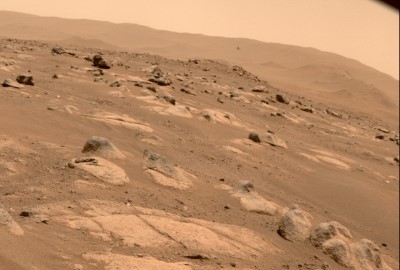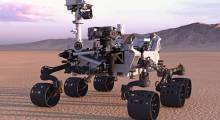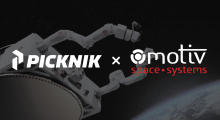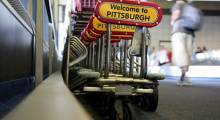After successfully completing its fourth historic flight on Friday, April 30, the National Aeronautics and Space Administration has more plans for the Ingenuity robotic helicopter on Mars. The flight had been delayed because of a software problem, but it then successfully climbed to an altitude of 5 meters (16 feet) and flew about 133 m (436 ft.) and back toward the Perseverance rover for round trip of 117 seconds and 266 m (872 ft.).
This flight surpassed the records set in the drone's third flight on April 25. NASA took more pictures with Ingenuity's black-and-white navigation camera and its color camera. The agency said it plans to use some stereo images to create 3D imagery of the Martian surface.
Now that Ingenuity has proven that that powered, controlled flight is possible in the thin atmosphere of Mars, its mission will shift. In a new operations demonstration phase, the drone will explore how aerial scouting and other functions could benefit future exploration of Mars and other worlds.
Ingenuity to test capabilities
This new phase will begin after the helicopter completes its next flight, said NASA. It decided to add an operations demonstration because the Perseverance rover is ahead of schedule after a thorough checkout of all vehicle systems since its Feb. 18 landing. Ingenuity's science team chose a nearby patch of crater bed for its first detailed explorations.
With the Mars Helicopter's energy, telecommunications, and in-flight navigation systems performing beyond expectations, an opportunity arose to continue exploring its capabilities with an operations demonstration without significantly affecting rover scheduling.
“The Ingenuity technology demonstration has been a resounding success,” said Thomas Zurbuchen, associate administrator of NASA's Science Mission Directorate. “Since Ingenuity remains in excellent health, we plan to use it to benefit future aerial platforms while prioritizing and moving forward with the Perseverance rover team's near-term science goals.”
The operations demonstration will begin in about two weeks with the helicopter's sixth flight. Until then, Ingenuity will be in a transitional phase that includes its fifth foray into Mars' crimson skies, according to NASA.
Flight 5 would send Ingenuity on a one-way mission, landing at the new site. If Ingenuity remains healthy after that flight, the next phase can begin.
Change of course
Ingenuity's transition from conducting a technology demonstration to an operations demonstration brings with it a new flight envelope. Along with those one-way flights, there will be more precision maneuvering, greater use of its aerial-observation capabilities, and more risk overall.
The change also means Ingenuity will require less support from the Perseverance rover team, which is looking ahead for targets to take rock and sediment samples in search of ancient microscopic life. On April 26 – the mission's 66th sol, or Martian day – Perseverance drove 10 m (33 ft.) with the goal to identify targets.
“With the short drive, we have already begun our move south toward a location the science team believes is worthy of investigation and our first sampling,” said Ken Farley, project scientist for the Perseverance rover at Caltech in Pasadena, Calif. “We'll spend the next couple of hundred sols executing our first science campaign looking for interesting rock outcrop along this 2-km (1.24-mi.) patch of crater floor before likely heading north and then west toward Jezero Crater's fossil river delta.”
While Perseverance conducts these short drives, Ingenuity may land near the rover's current location or its next anticipated parking spot. The helicopter could perform aerial observations of rover science targets, potential rover routes, and inaccessible features while also capturing stereo images for digital elevation maps.
NASA said it expects that the lessons learned from these efforts will benefit future mission planners. These scouting flights are a bonus and not a requirement for Perseverance to complete its science mission, it added.
The cadence of flights during Ingenuity's operations demonstration phase will slow from once every few days to about once every two or three weeks, and they will be scheduled to avoid interfering with Perseverance's science operations. The team said it will assess flight operations after 30 sols and will complete flight operations no later than the end of August.
That timing will allow the rover team time to wrap up its planned science activities and prepare for solar conjunction in mid-October, when Mars and Earth will be on opposite sides of the Sun, blocking communications.
“We have so appreciated the support provided by the Perseverance rover team during our technology demonstration phase,” said MiMi Aung, an Ingenuity project member at NASA's Jet Propulsion Laboratory (JPL) in Southern California. “Now we have a chance to pay it forward, demonstrating for future robotic and even crewed missions the benefits of having a partner nearby that can provide a different perspective – one from the sky. We are going to take this opportunity and run with it – and fly with it.”
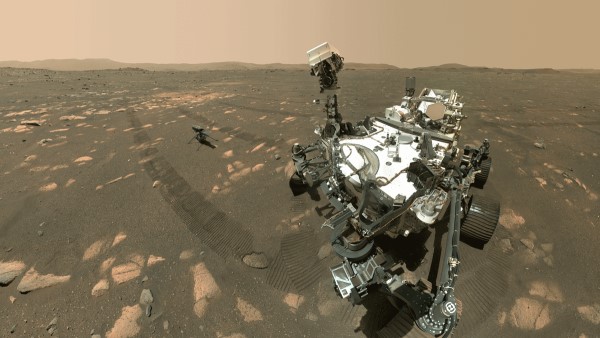
More about Ingenuity and Perseverance
The Ingenuity Mars Helicopter was built by JPL, which also manages this technology demonstration project for NASA headquarters. It is supported by NASA's Science, Aeronautics, and Space Technology mission directorates. NASA's Ames Research Center in California's Silicon Valley and NASA's Langley Research Center in Hampton, Va., provided flight performance analysis and technical assistance during Ingenuity's development.
AeroVironment, Qualcomm, and SolAero also provided design assistance and major vehicle components. Lockheed Space in designed and manufactured the Mars Helicopter Delivery System.
A key objective for Perseverance's mission on Mars is astrobiology, including the search for signs of ancient microbial life. The rover will characterize the planet's geology and past climate, and it will be the first mission to collect and cache Martian rock and regolith (broken rock and dust).
NASA said that subsequent missions, in cooperation with ESA (European Space Agency), would send spacecraft to Mars to collect these sealed samples from the surface and return them to Earth for in-depth analysis. The Mars 2020 Perseverance mission is part of NASA's “Moon to Mars” exploration approach, which includes Artemis missions to the Moon that will help prepare for human exploration of the Red Planet.
At NASA neadquarters, Dave Lavery is the program executive for the Ingenuity Mars Helicopter. At JPL, Aung is the project manager, and J. “Bob” Balaram is chief engineer. The U.S. Senate last week confirmed Bill Nelson as new NASA administrator.
Article topics
Email Sign Up

